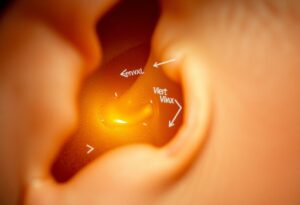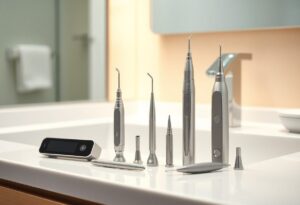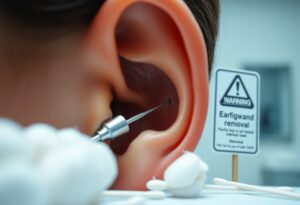Just as earwax can build up in your ears, a bulb syringe can be an effective tool for safe ear cleaning at home. This guide will walk you through the steps to properly use a bulb syringe for earwax removal, helping you maintain your ear health. By following these instructions, you can effectively clear excess wax and improve your hearing without the need for professional assistance.
Key Takeaways:
- Fill the bulb syringe with warm water or saline solution before use.
- Gently insert the tip into the ear canal without forcing it.
- Flush the ear by squeezing the bulb, allowing water to flow and help dislodge earwax.
The Anatomy of Earwax: Understanding Its Purpose and Composition
The Function of Earwax in Ear Health
Earwax, or cerumen, plays a vital role in ear health by trapping dust, dirt, and other foreign particles, preventing them from reaching the inner ear. It also contains antimicrobial properties that help inhibit the growth of bacteria and fungi, thereby reducing the risk of infections. The gradual migration of earwax helps naturally clear debris from the ear canal, ensuring it remains clean and protected.
Composition and Types of Earwax
Earwax comprises a mixture of secretions from sebaceous glands, sweat glands, and shed skin cells. There are two primary types: wet and dry cerumen, determined by genetic factors. Wet earwax is often sticky and yellow-brown, while dry earwax appears flaky and light gray. The variation in composition can affect how efficiently earwax serves its protective functions.
| Type | Characteristics |
| Wet Earwax | Sticky, yellow-brown, commonly found in individuals of African and European descent |
| Dry Earwax | Flaky, light gray, more prevalent in East Asian populations |
| pH Level | Typically ranges from 6 to 7, contributing to antimicrobial properties |
| Function | Protective barrier, prevents moisture loss, and self-cleansing mechanism |
Earwax composition can vary significantly among individuals, affecting its efficacy at combating ear canal infections. Factors such as age, gender, and environmental influences play important roles in how much earwax you produce. You might observe that some people tend to have drier earwax due to lower oil production, while others may experience excessive buildup of wet cerumen, necessitating more regular cleaning. Variability requires awareness of personalized ear care.
- Dry earwax is more common in individuals of East Asian descent.
- Wet earwax may serve better as a protective barrier against pathogens.
- You might find pH variations affecting ear health and cleanliness.
- Factors like hormonal changes can influence earwax production.
- Thou should always assess your earwax type for effective home care.
| Common Factors | Effect on Earwax |
| Genetics | Determines type (wet vs. dry) and production rate |
| Age | Older adults may produce less earwax, leading to dryness |
| Environment | Dusty conditions increase wax production for protection |
| Health Conditions | Certain conditions can alter earwax consistency and volume |
Signs You Need to Remove Earwax
Physical Symptoms of Earwax Buildup
Experiencing muffled hearing, ear pain, or a feeling of fullness in your ear can indicate an excess of earwax. You might also notice a ringing sensation, commonly known as tinnitus, or even occasional dizziness. Increased earwax may also lead to itchiness or a discharge from the ear, signaling that intervention is necessary to alleviate these uncomfortable symptoms.
Potential Risks of Neglecting Earwax Removal
Allowing earwax buildup to go unattended can lead to various health issues such as chronic ear infections, hearing loss, or impacted cerumen, which may require medical treatment. Infections can arise when moisture and bacteria are trapped, leading to pain and inflammation that could escalate if not addressed promptly.
Untreated earwax buildup might also affect your overall ear health. For instance, impacted earwax can obstruct the ear canal, causing not only temporary hearing impairment but also potentially permanent damage to the ear’s delicate structures. In severe cases, this buildup can reach a point where it requires professional cleaning under medical supervision, elevating the risk of complications. Staying proactive about earwax removal protects you from these potential hazards and ensures optimal auditory health.
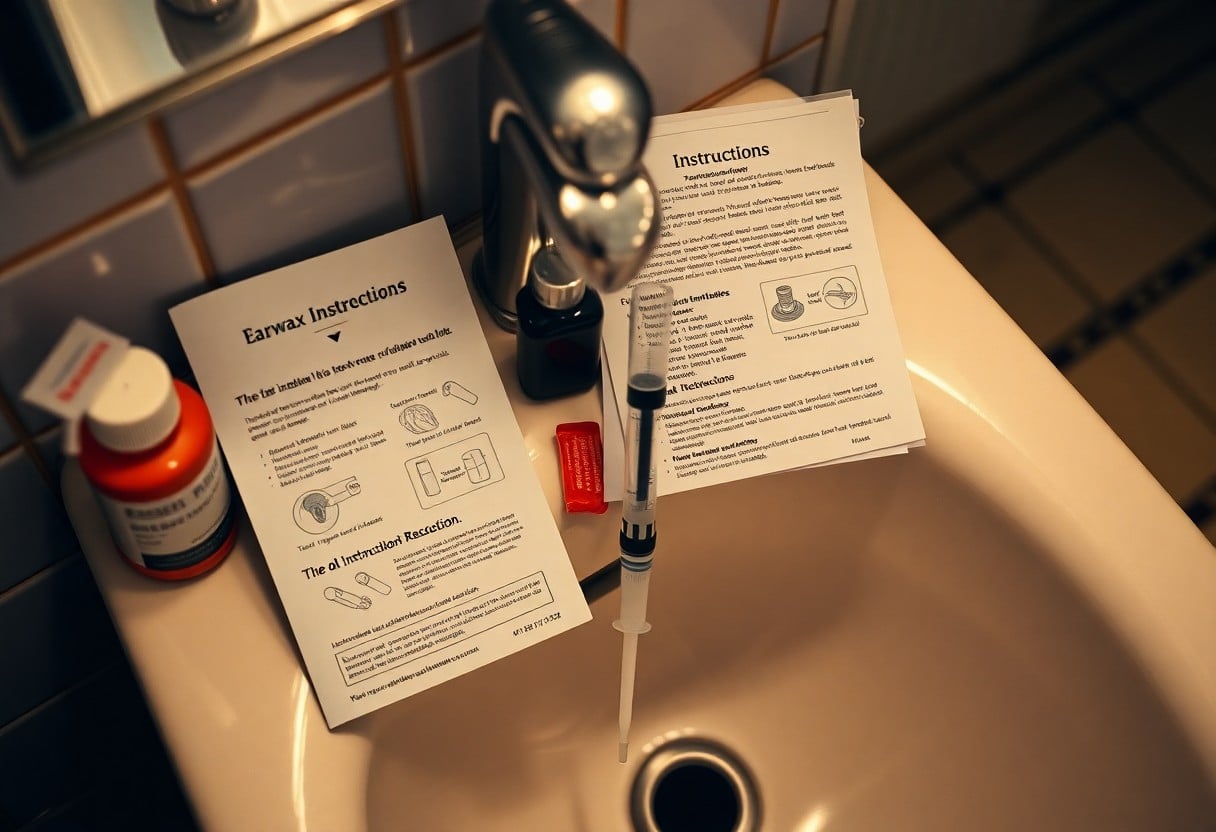
Selecting the Right Bulb Syringe for Home Use
Features to Look for in a Bulb Syringe
Opt for a bulb syringe with a soft, squeezable material that allows for easy operation without excessive force. A wide opening facilitates filling with water or saline solutions, enhancing effective irrigation. Additionally, a transparent design enables you to monitor fluid levels and earwax removal. Look for a size that fits comfortably in your hand for better control during use.
Recommended Brands and Models
Popular brands like “DuraComfort” and “Fridababy” offer reliable bulb syringes known for their durability and effectiveness. Consider models specifically designed for ear cleaning, which often have ergonomic features and optimal bulb shapes for earwax removal. These options are typically well-reviewed for ease of use and effectiveness.
DuraComfort’s bulb syringe, for instance, has received accolades for its comfortable grip and efficient drainage. The Fridababy version comes with a precise tip designed to target earwax with minimal discomfort. Both brands highlight user-friendly designs and often include additional cleaning accessories, promoting safer use and hygiene during the earwax removal process.
Step-by-Step Guide to Using a Bulb Syringe for Earwax Removal
| Pre-Procedure Preparation | Gather all necessary materials, including a bulb syringe, warm water or saline solution, a towel, and a bowl for drainage. Ensure your workspace is clean and comfortable to avoid any infection or mess. Check for any signs of ear infection or ruptured eardrum before proceeding. |
| The Earwax Removal Process: A Detailed Walkthrough | Fill the bulb syringe with warm water or saline solution. Sit comfortably and tilt your head to the side, placing a towel under your ear to catch any liquid that escapes. Gently insert the tip of the syringe into your ear canal without causing discomfort. Squeeze the bulb to release the solution, allowing it to flush out the earwax. Let the fluid drain into the bowl and repeat if necessary. |
| Post-Removal Care and Cleaning | After the procedure, clean your ear with a soft towel and allow it to dry completely. Avoid inserting anything into your ear canal for at least 24 hours. Store the bulb syringe properly and clean it with warm soapy water for future use. |
The Earwax Removal Process: A Detailed Walkthrough
Begin by carefully filling the bulb syringe with your chosen liquid at a comfortable temperature. Avoid excessive force when inserting the syringe tip into your ear; a gentle approach reduces the risk of injury. Squeeze the bulb slowly and steadily, allowing the solution to flow into your ear. This method effectively softens and dislodges earwax, which may then flow out naturally. Keep your head tilted for a moment to let any remaining solution drain. You may need to repeat this process until the desired results are achieved.
Post-Removal Care and Cleaning
After completing the earwax removal, it’s vital to ensure your ear is clean and dry. Use a soft towel to gently pat around the outer ear and allow any remaining moisture to evaporate. Avoid water exposure to the ear canal for the next day to promote healing. Clean the bulb syringe with warm soapy water and let it air dry, ensuring it’s ready for future use without the risk of contamination.
Common Pitfalls and How to Avoid Them
Mistakes That Can Make Earwax Removal Risky
Using a bulb syringe incorrectly can lead to injury or infection. Oversaturating your ears with water can cause discomfort or even ruptured eardrums. Avoid using excessive force during suction, as this can irritate your ear canal or push the wax further in. Steer clear of inserting the syringe too deep into your ear, which may cause damage to sensitive structures within your ear.
Tips for Successful Earwax Extraction
Successful earwax removal relies on preparation and technique. Before you begin, ensure the bulb syringe is clean and filled with warm water for comfort. Angle your head appropriately to facilitate drainage and keep the syringe tip at a safe distance from your ear canal. Gently squeeze the bulb to avoid creating too much pressure, which could complicate the process. After you apply these techniques, you should notice an improvement in the process.
- Use warm water to avoid discomfort.
- Maintain a comfortable angle to allow for proper drainage.
- Keep the syringe tip at a safe distance from your ear canal.
- Monitor for any signs of discomfort or infection.
- Seek professional advice if issues persist.
Monitor the area closely after extraction; any lingering discomfort may signal a need for further action. Proper aftercare is vital; consider using a gentle cotton swab around the outer ear to keep the area clean without aggravating the ear canal. If aftercare shows no improvement and wax persists, don’t hesitate to consult a healthcare professional for guidance.
- Inspect for any signs of irritation post-extraction.
- Use a cotton swab only on the outer ear.
- Stay hydrated to promote natural earwax shedding.
- Keep the ear dry after the procedure.
- Consult a doctor if symptoms continue.
When to Seek Professional Help: Recognizing Limitations
Warning Signs That Indicate Professional Intervention
If you experience severe pain, bleeding, or a significant loss of hearing after attempting earwax removal, seek professional help immediately. Additional warning signs include persistent dizziness, a strange odor coming from your ear, or the sensation of fullness that does not improve. These symptoms may indicate complications that require medical assessment and treatment.
Alternative Treatments for Earwax Buildup
Several over-the-counter solutions can help manage earwax buildup, including commercial ear drops designed to soften wax. Mineral oil, baby oil, or hydrogen peroxide diluted with water can also be effective alternatives. These solutions aim to dissolve and dislodge wax, providing relief and reducing the need for invasive methods.
Alternative treatments often focus on softening the earwax to promote natural drainage. Several studies indicate that using over-the-counter ear drops regularly can prevent excessive build-up. For instance, a mixture of equal parts hydrogen peroxide and water applied a few times a week may keep ear canals clear. If wax persists despite these treatments, consult a healthcare provider for safe removal options or prescription solutions that can effectively address the accumulation.
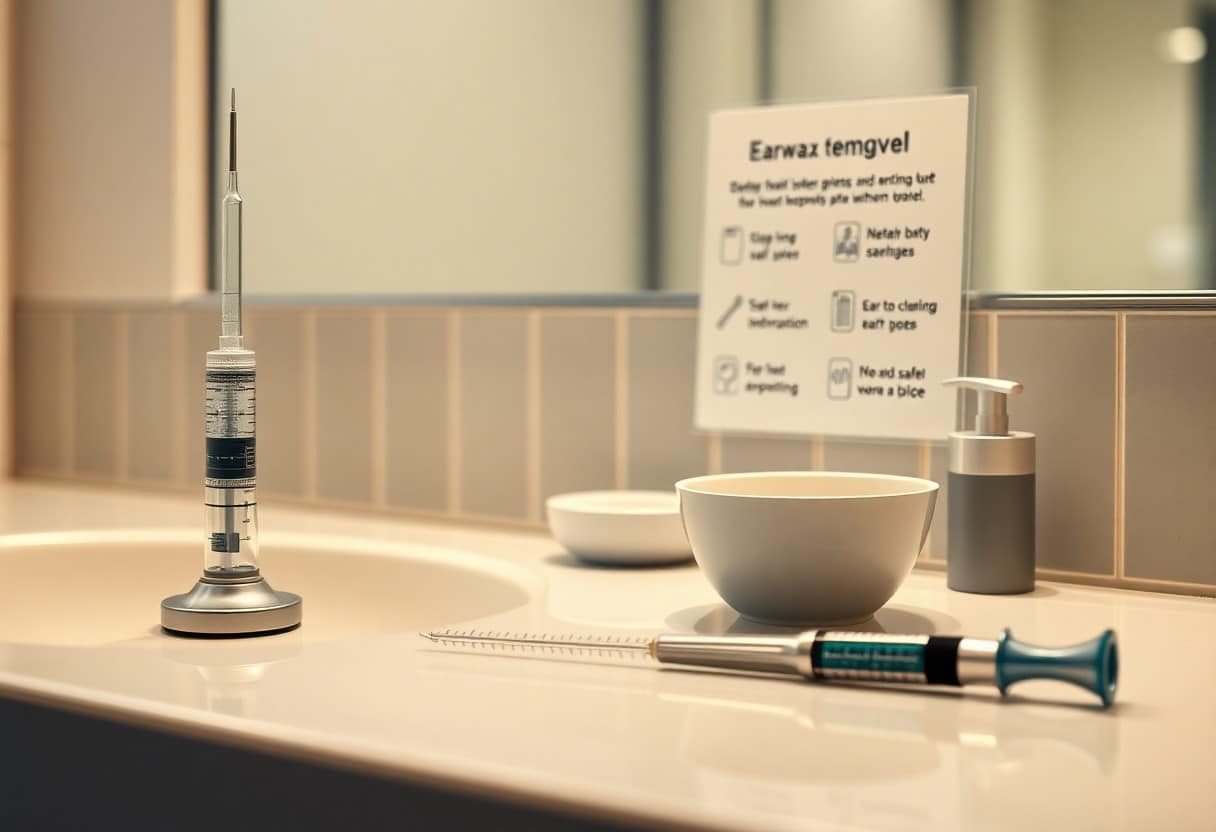
The Science Behind Safe and Effective Ear Cleaning
Expert Opinions on Earwax Removal Techniques
Healthcare professionals emphasize the gentleness required in ear cleaning. Using non-invasive methods, such as bulb syringes filled with warm saline, minimizes risk and ensures effective dislodging of earwax. Many experts advise against cotton swabs, which often push wax deeper, while alternative techniques focus on safety and comfort.
The Role of Hydration and Ear Hygiene
Hydration plays a significant role in maintaining optimal ear health. Adequate water intake supports overall bodily functions, helping to keep the earwax consistency manageable, which in turn aids in its natural expulsion. Regular, gentle cleaning practices prevent excessive buildup and promote a healthy ear environment.
Incorporating hydration into your daily routine can enhance ear hygiene. Sufficient fluid intake encourages a balance in earwax production, making it less likely to harden and accumulate. Additionally, practicing thorough cleansing of the outer ear without inserting objects deep into the canal can help maintain ear hygiene, further reducing the need for invasive cleaning methods like bulb syringes.
Summing up
Following this guide, you can effectively use a bulb syringe for earwax removal at home by ensuring the right technique and safety measures are in place. Start by softening the earwax with mineral oil or saline solution, then gently squeeze the bulb syringe filled with warm water into your ear while keeping your head tilted. Allow the water to sit briefly before tilting your head to let it drain out, aiding in the removal of excess wax. Always consult a healthcare professional if you experience pain or persistent blockage.
FAQ
Q: What is a bulb syringe and how does it work for earwax removal?
A: A bulb syringe is a rubber or plastic device that can be squeezed to expel liquid. It works by applying gentle pressure to send water or saline into the ear canal, helping to loosen and flush out earwax.
Q: How do I prepare a bulb syringe for earwax removal?
A: First, clean the bulb syringe with warm, soapy water. Rinse thoroughly and fill it with warm (not hot) saline solution or water. Ensure that the nozzle is positioned correctly for easy insertion into the ear.
Q: What steps should I follow to use the bulb syringe safely?
A: Tilt your head over a sink with the affected ear facing down. Gently insert the nozzle a small distance into the ear canal. Squeeze the bulb syringe slowly and gently to release the liquid. Allow excess fluid and earwax to drain out.
Q: How often can I use a bulb syringe for earwax removal?
A: It is advisable to limit the use of a bulb syringe to once every few weeks, unless directed by a healthcare professional. Overuse can irritate the ear canal and lead to complications.
Q: What should I do if I experience pain or discomfort during the process?
A: Stop using the bulb syringe immediately if you feel pain or discomfort. Consult a healthcare professional to assess your ear and provide alternative methods for earwax removal.

